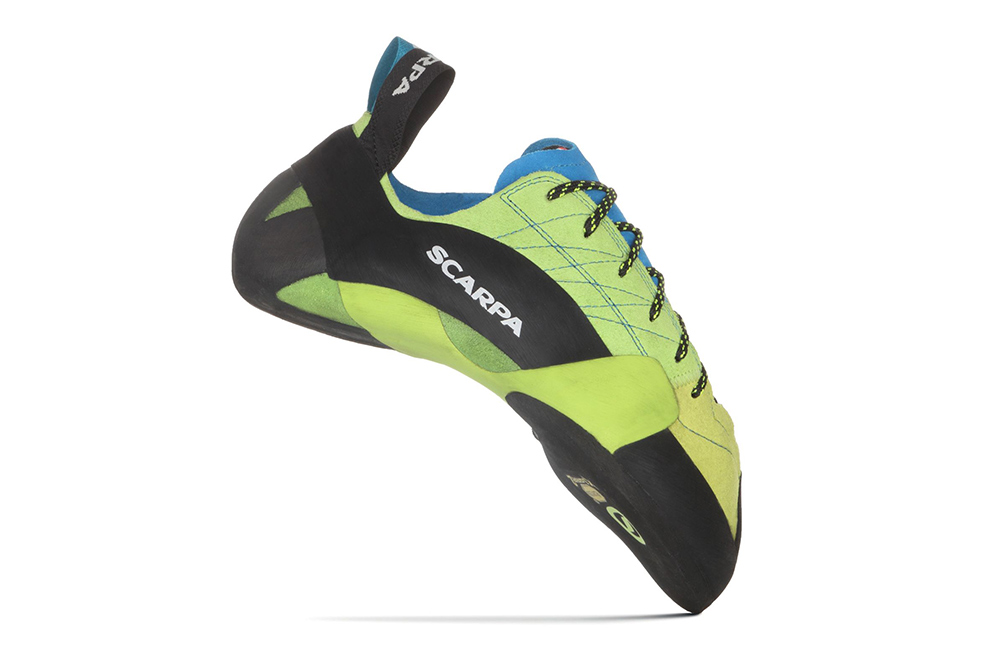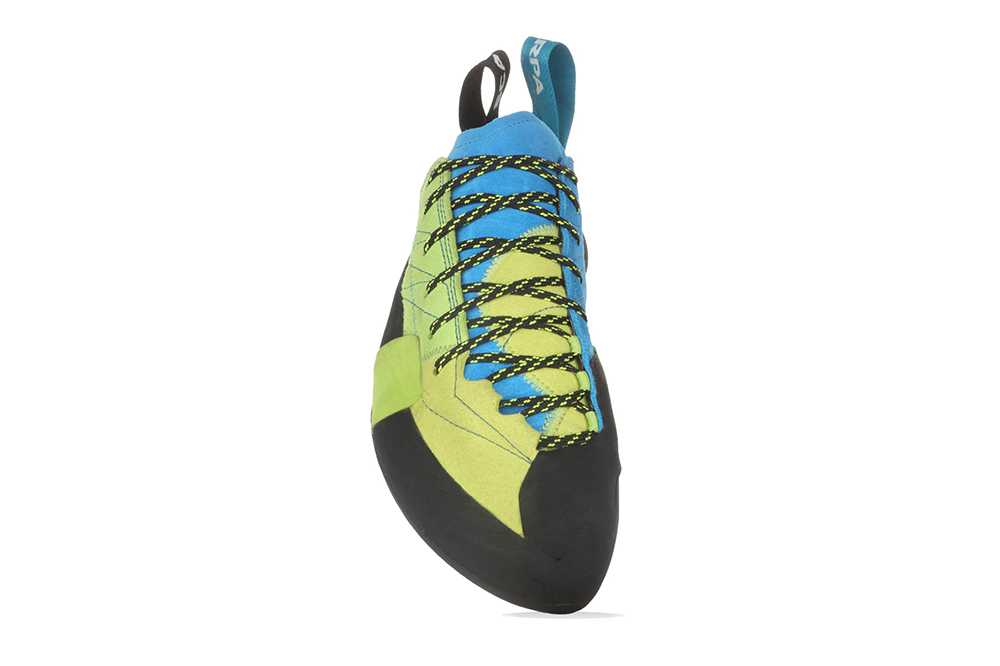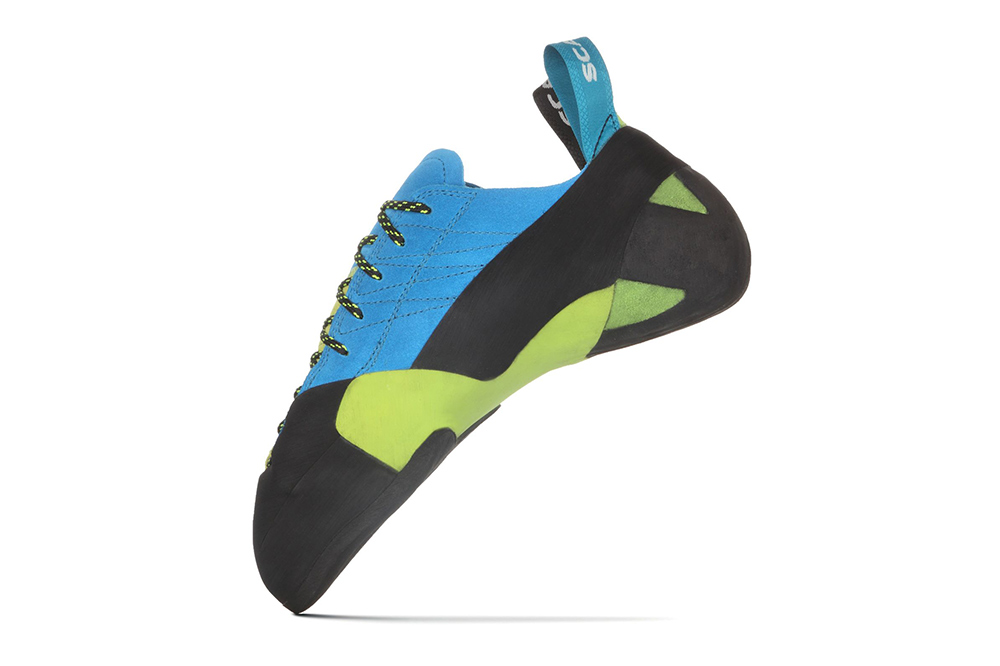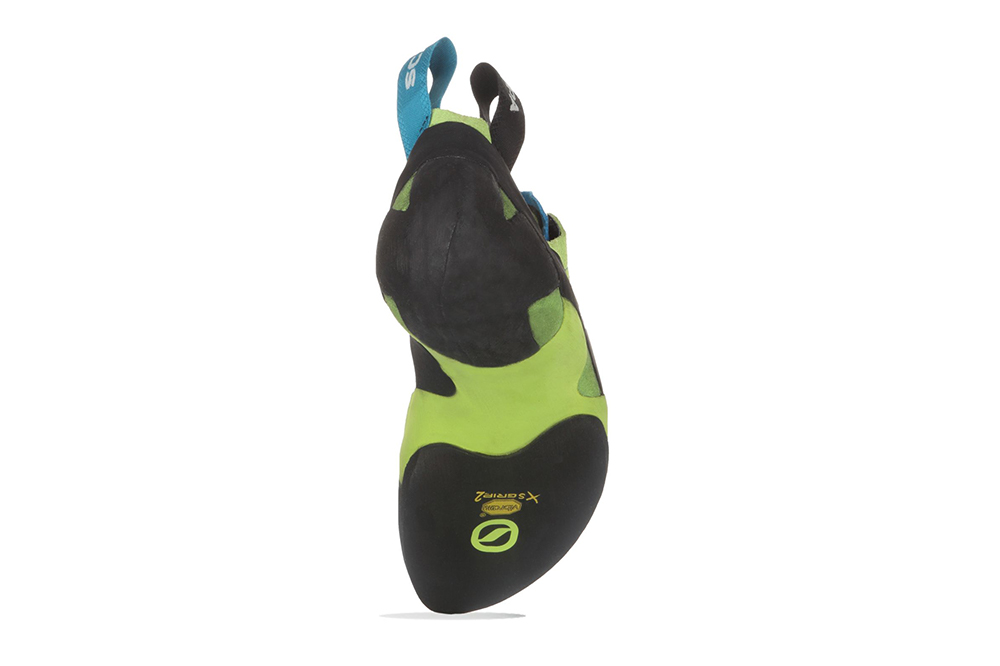The Scarpa Mago – The Best Climbing Shoe Currently Available?
The new Scarpa Mago is the best high-performance climbing shoe I’ve ever used.
There, I said it. And I'm not exaggerating. In over 30 years of climbing, I have never encountered a high-performance climbing shoe that feels as precise and locked-in as the new Scarpa Mago.
There, I said it. And I'm not exaggerating. In over 30 years of climbing, I have never encountered a high-performance climbing shoe that feels as precise and locked-in as the new Scarpa Mago.
Yes, I realize that these are some pretty bold statements, but the Mago really is that good.
And yet, on the surface, the shoe looks like many other high-end lace-ups; it has a highly asymmetric shape, it’s aggressively downturned and it features a powerfully tensioned rand. All good, but nothing that would suggest how well the shoe actually performs.
To understand the Mago’s benchmark-setting performance, we need to look at some of the shoe’s more subtle construction details.
And yet, on the surface, the shoe looks like many other high-end lace-ups; it has a highly asymmetric shape, it’s aggressively downturned and it features a powerfully tensioned rand. All good, but nothing that would suggest how well the shoe actually performs.
To understand the Mago’s benchmark-setting performance, we need to look at some of the shoe’s more subtle construction details.
For the new Mago, Scarpa started with a brand new last that features more asymmetry and downturn. On the surface, this last may not look radically different from other Scarpa lasts, but, it provides more power and control when standing on small holds on steep terrain. The randing is similarly super-charged with Scarpa’s X-Tension construction. This unique rand design offers support and power without the need for excessively stiff, sensitivity-robbing midsoles. Speaking of midsoles, the Mago sports a concave Toe Power Support (TPS) insert that provides support and precision on small holds and improves pulling on steeper ground. On more slabby terrain, the insert flattens increasing shoe-to-rock contact for greater confidence and control. Finally, Scarpa has chosen to use Vibram’s XS Grip 2 rubber for the sole. This rubber compound has a proven track record for exceptional performance on steeper rock and plastic, and is the ideal choice for the new Mago.
While these construction details surely improve the Mago’s performance, they cannot overshadow the shoe’s impressive upper. Consisting of multiple suede and microsuede panels, the Mago can mould to your foot (less performance-robbing dead space) without radically changing shape over time. Lacing extends right to the toe (something rarely seen in today's gym-oriented and cave-specific footwear) for a customized fit and improved control on the micro-holds frequently encountered in real-world climbing. The addition of a small rubber toe-patch over the big toe area improves durability and also aids performance during the almost mandatory toe-hooking and scumming found on steeper terrain. On the back end, Scarpa has speced a low volume heel that seemed custom made for my foot (more on this later).
On small technical holds, the Mago felt incredibly precise and provided a level of control that few (if any) other shoes that I’ve used could match.
So, now that we have some idea as to how the Mago is constructed, let’s talk about how it performed during my extended test. Folks that have been reading these reviews for a while know that I have a home Moon Board circuit (as well as other home wall circuits) that I use as a part of any shoe testing review. I find that having fixed, repeatable circuits allows me to have more of an objective insight when it comes to assessing a shoe’s performance. And this where I started to get really excited about the Mago.
On small technical holds, the Mago felt incredibly precise and provided a level of control that few (if any) other shoes that I’ve used could match. What was perhaps more interesting is that it achieved this without sacrificing the sensitivity that is critical for difficult (and often insecure) climbing. As the angle increased, the Mago continued to not disappoint. With many shoes that are optimized for small holds on gently overhanging terrain, performance begins to suffer as the angle steepens. This was not the case with the Magos. And while they may not be my first choice for super-steep cave climbing (where super-soft and often less structured shoes excel), the Magos displayed a surprising level of versatility and performance, especially for such a specialized high-end shoe.
Ok, up to this point I’ve been gushing about the Mago’s forefoot performance, so I think it’s now only fair to look at the Mago’s heel (and its hooking abilities) that I alluded to earlier in this article. At first glance, the Mago’s heel seems a bit underwhelming; there are no protruding reinforcing ribs or moulded construction often found on many high-end shoes. Because of this, climbers might think that the back end of the Mago may not match the performance of the front end of the shoe. Well, they would be wrong. I don’t know if Heinz Mariacher (Scarpa’s climbing shoe designer) has sprinkled the Mago’s heel with some magical pixie climbing dust or that the heel seems to fit my foot perfectly, but this shoe performed as well or better than any of other my more specialized heel-hooking shoes. Seriously, I was expecting the Mago to flail on some of the more intensive heel-hooking problems in my circuit and instead it just cruised through even the most tenuous heel hooks. I guess the combination of pixie dust and a perfect fit really works.
So now we come the part where I get to talk about any shortcomings that I encountered with the Mago. Unfortunately (or fortunately if you are thinking of getting the Mago), I have nothing. As much as I would like to point out something about the Mago that disappointed me, there is nothing that I would change. The fit for me is absolutely perfect. The materials in the upper conform to my foot without sacrificing fit and performance. Small hold performance on steep terrain is unmatched, and heel hooking is a good as any shoe I’ve used.
For real-world rock climbing on steep walls with small footholds, there is no shoe that I’ve used that matches the Mago’s performance. Get yourself a pair. You will not be disappointed.
For real-world rock climbing on steep walls with small footholds, there is no shoe that I’ve used that matches the Mago’s performance. Get yourself a pair. You will not be disappointed.
You can find out more about the new Mago and and other fine Scarpa products at https://www.scarpa.com/.
Join the discussion of this and other climbing related stories at https://ontarioclimbing.com/forum/
Join the discussion of this and other climbing related stories at https://ontarioclimbing.com/forum/







